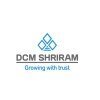Assistant Chemist
10+ Assistant Chemist Interview Questions and Answers

Asked in DCM Shriram

Q. What color appears at the end point of phenolphthalein indicator?
At the endpoint of a titration using phenolphthalein, the solution turns pink, indicating a pH change to above 8.2.
Phenolphthalein is a pH indicator commonly used in acid-base titrations.
It changes color from colorless to pink as the pH rises above 8.2.
At the endpoint, a faint pink color indicates that the solution is slightly basic.
For example, in a titration of hydrochloric acid with sodium hydroxide, the endpoint is marked by a pink color.

Asked in UltraTech Cement

Q. What is moisture correction?
Moisture correction is the adjustment made to a sample's weight to account for the presence of water or moisture.
Moisture correction is necessary to obtain accurate results in chemical analysis.
It involves weighing a sample, drying it to remove moisture, and re-weighing it to determine the amount of moisture present.
The correction factor is then applied to the original weight to obtain the dry weight of the sample.
For example, if a sample weighs 10 grams and contains 2 grams ...read more
Assistant Chemist Interview Questions and Answers for Freshers

Asked in DCM Shriram

Q. Why are most sieves round?
Sieves are often round in shape due to their efficiency in separating particles evenly.
Round shape allows for equal distribution of particles across the sieve
Round shape minimizes the chances of particles getting stuck in corners or edges
Round sieves are easier to handle and stack compared to other shapes
Round shape promotes better flow of materials through the sieve

Asked in Ipca Laboratories

Q. What are the stages and types of granulation, and which machines are used for granulation?
Granulation is a process of forming granules from powder. There are two types of granulation - wet and dry. Various machines are used for granulation.
Wet granulation involves adding a liquid binder to the powder mixture to form granules. Dry granulation involves compacting the powder mixture to form granules.
Some machines used for wet granulation are high shear mixers, fluid bed granulators, and rotary granulators. Some machines used for dry granulation are roller compactors ...read more

Asked in M Swasth Solutions

Q. What is pharmacokinetics and pharmacodynamics
Pharmacokinetics is the study of how drugs move through the body, while pharmacodynamics is the study of how drugs interact with the body.
Pharmacokinetics involves the absorption, distribution, metabolism, and excretion of drugs in the body.
Pharmacodynamics involves the study of how drugs interact with receptors and enzymes in the body to produce a therapeutic effect.
Understanding pharmacokinetics and pharmacodynamics is important for determining the appropriate dose and dosi...read more

Asked in UltraTech Cement

Q. What is the role of SO3, and why is its target different?
SO3 is sulfur trioxide, a highly reactive compound used in various industrial processes. Its target is different due to its ability to react with different substances.
SO3 is a chemical compound composed of sulfur and three oxygen atoms.
It is highly reactive and can react with water to form sulfuric acid.
SO3 is used in the production of sulfuric acid, detergents, and explosives.
Its target is different because of its reactivity and ability to form strong acids.
Assistant Chemist Jobs




Asked in UltraTech Cement

Q. How do you control the bleeding of concrete?
Bleeding of concrete can be controlled by reducing the water content, using proper mix design, and avoiding overworking the concrete.
Reduce water content to prevent excess bleeding
Use proper mix design with appropriate aggregate size and type
Avoid overworking the concrete, which can cause excess bleeding
Use admixtures such as air-entraining agents or viscosity-modifying agents
Use proper curing techniques to prevent surface evaporation and promote hydration
Consider using a sur...read more

Asked in Ipca Laboratories

Q. What are the different types of coatings?
Coatings can be classified into various types based on their composition and application.
Organic coatings - made of carbon-based compounds, used for corrosion protection and aesthetics
Inorganic coatings - made of non-carbon-based compounds, used for high-temperature resistance and electrical insulation
Metal coatings - made of metals like zinc, aluminum, and copper, used for corrosion protection
Ceramic coatings - made of ceramic materials, used for wear resistance and high-tem...read more
Share interview questions and help millions of jobseekers 🌟


Asked in UltraTech Cement

Q. What is concrete?
Concrete is a mixture of cement, sand, gravel, and water used for construction.
Concrete is a strong and durable material used in construction.
It is made by mixing cement, sand, gravel, and water in specific proportions.
The mixture hardens over time and becomes a solid mass.
Concrete is used for building foundations, walls, floors, and roads.
It can also be used for decorative purposes, such as in stamped concrete or polished concrete floors.

Asked in DCM Shriram

Q. What is BIS?
BIS stands for Bureau of Indian Standards.
BIS is the national standards body of India.
It is responsible for the development and implementation of standards across various sectors.
BIS ensures quality, safety, and reliability of products and services.
It provides certification and testing services to ensure compliance with standards.
BIS marks are used to indicate that a product meets the required standards.
Examples of BIS standards include IS 13432 for compostable plastics and I...read more

Asked in Alembic Pharmaceuticals

Q. What is pharmacology
Pharmacology is the study of drugs and their effects on living organisms.
Pharmacology involves the study of how drugs interact with biological systems.
It includes the study of drug absorption, distribution, metabolism, and excretion.
Pharmacology also covers the study of drug development, safety, and efficacy.
Examples of pharmacology include the study of antibiotics, chemotherapy drugs, and painkillers.
Pharmacologists work to develop new drugs and improve existing ones.

Asked in Bharat Biotech International

Q. What is pharmaceutics?
Pharmaceutics is the study of the design, development, and formulation of drugs.
It involves the creation of new drugs and the improvement of existing ones.
Pharmaceutics also deals with the delivery of drugs to the body, including dosage forms and drug delivery systems.
It encompasses various fields such as physical chemistry, pharmacology, and pharmacokinetics.
Examples of pharmaceutics include the development of extended-release tablets, transdermal patches, and inhalers.
Pharm...read more

Asked in UltraTech Cement

Q. What is a Le Chatelier autoclave?
Le Chatelier's principle states that if a system at equilibrium is disturbed, the system will shift to counteract the disturbance.
Le Chatelier's principle is used to predict the effect of changes in temperature, pressure, or concentration on a system at equilibrium.
For example, if the pressure is increased in a system at equilibrium, the system will shift to the side with fewer moles of gas to relieve the pressure.
Similarly, if the temperature is increased in an endothermic r...read more

Asked in UltraTech Cement

Q. What is a Xray and XRD
X-ray is a form of electromagnetic radiation, while XRD (X-ray diffraction) is a technique used to analyze the crystal structure of materials.
X-ray is a type of electromagnetic radiation with high energy and short wavelength.
XRD is a technique that uses X-rays to determine the atomic and molecular structure of a crystal.
X-ray diffraction is commonly used in material science, chemistry, and geology.
X-rays are also used in medical imaging to visualize the internal structures of...read more

Asked in UltraTech Cement

Q. Cement contents of different grades
Cement contents vary for different grades of cement.
Cement is graded based on its compressive strength at 28 days.
The most commonly used grades are 33, 43, and 53.
The cement content for each grade depends on the type of cement used.
For example, for OPC (Ordinary Portland Cement), the cement content for grade 33 is 220 kg/m3, for grade 43 it is 300 kg/m3, and for grade 53 it is 350 kg/m3.

Asked in DCM Shriram

Q. PH range of water
The pH range of water is typically between 6.5 and 8.5.
Water with a pH below 6.5 is considered acidic.
Water with a pH above 8.5 is considered alkaline.
The pH of water can vary depending on factors such as pollution, minerals, and dissolved gases.
For example, rainwater is slightly acidic with a pH of around 5.6 due to the presence of carbon dioxide.
Seawater has a pH of around 8.1, making it slightly alkaline.

Asked in Jio

Q. What is your educational qualification?
I hold a Bachelor's degree in Chemistry, with a focus on analytical techniques and laboratory practices.
Bachelor's degree in Chemistry from XYZ University.
Completed coursework in organic, inorganic, and physical chemistry.
Gained hands-on experience in laboratory settings during internships.
Participated in research projects focusing on chemical analysis.
Certified in Good Laboratory Practices (GLP).
Interview Questions of Similar Designations
Interview Experiences of Popular Companies








Reviews
Interviews
Salaries
Users

















